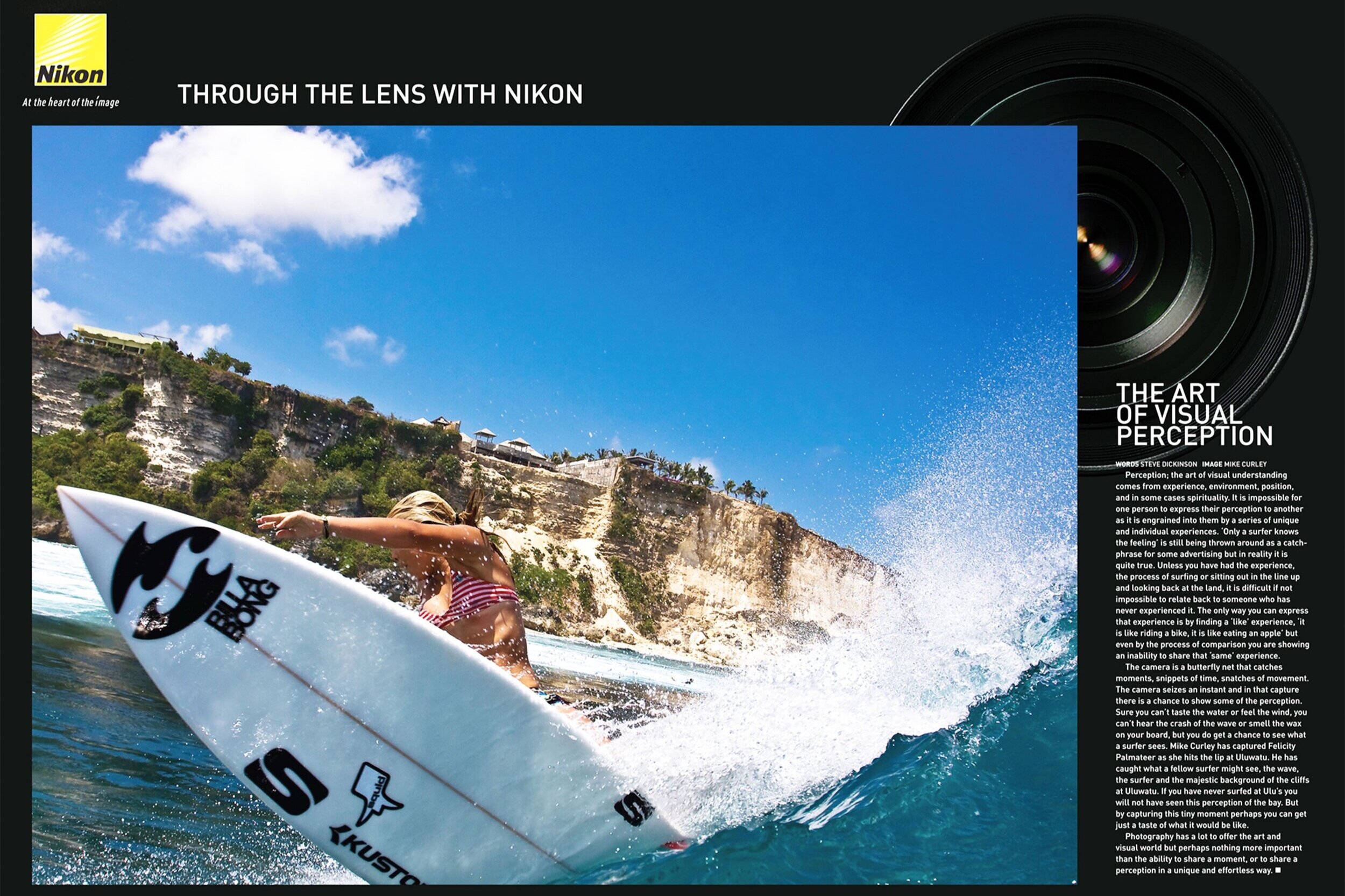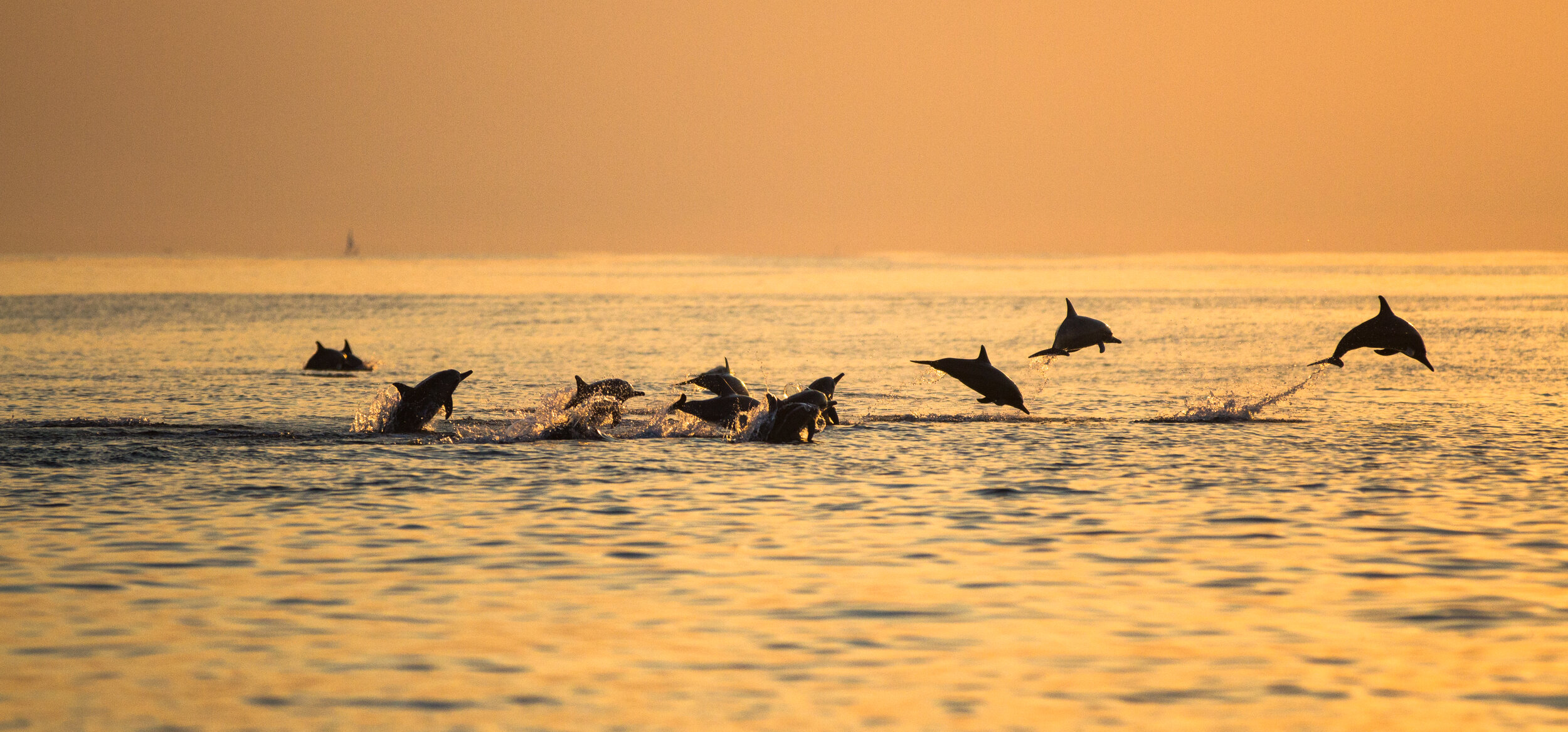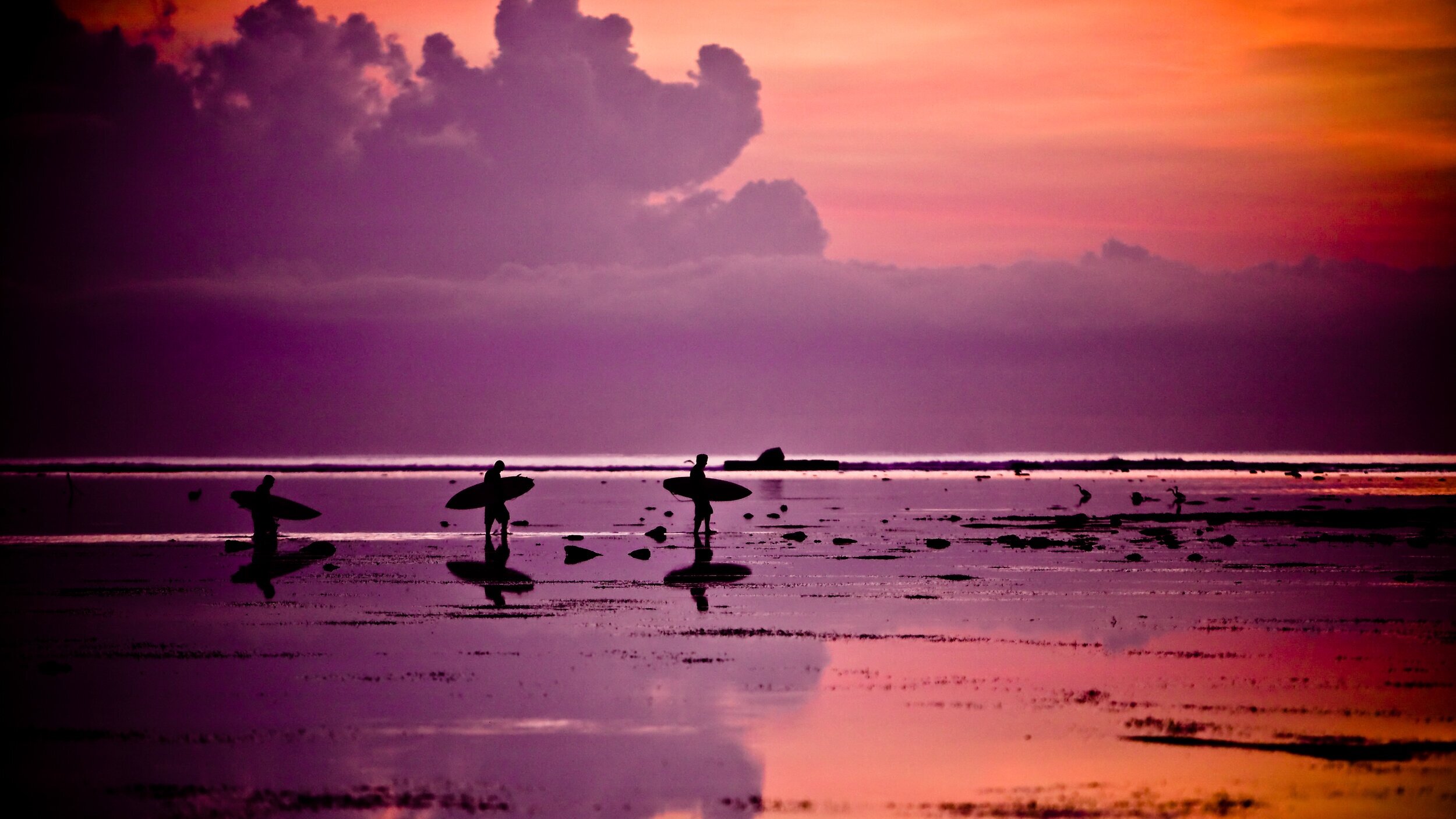MICK CURLEY: SURF PHOTOGRAPHER
WILLING TO GO WHERE OTHER PHOTOGRAPHERS WOULDN’T DARE TO GET THE SHOT, WORLD-CLASS SURF PHOTOGRAPHER MICK WAS INSPIRED TO GET BEHIND THE CAMERA DURING A THREE-YEAR ROAD TRIP ROUND HIS NATIVE AUSTRALIA, TURNING A PASSION INTO A CAREER MOST WOULD ONLY DREAM OF.
A friend of The Pink House, some of our favourite shots of Mick’s adorn our gallery wall. Here Mick tells us how perseverance and self-belief (and a big dose of talent) turned him into one of the world’s top surf photographers and what he thinks to the Cornish surf talent…
How did you get involved with photography?
I first really got into photography whilst traveling around Australia in a Land Cruiser for 3 years in my early twenties. We didn’t have mobile phones and we did a lot of remote travel, so there was plenty of time to learn a craft properly. I had a Canon EOS 1 film camera, and it was usually months before we came across a major town that had film processing. I used to always shoot with a notebook and light meter writing down settings and times, and that’s how I would learn what worked and what didn’t. Film wasn’t cheap and you didn’t want to mess up many shots. When I look at peoples work, most of the time I can tell who learnt from a film camera and who didn’t. You had to take more time with a film camera and getting it right in camera was a must. There was no post processing and fixing things up later. It wasn’t until I showed people my albums and they’d say “these are a little better than your average holiday shots” that I got thinking about photography seriously - it was a passion that changed into a successful career.
Talk us through a typical day shooting during a surf competition?
Surf photography is unique and most definitely has its challenges. I shoot water a lot which means getting right in there where the wave is barrelling over sharp reef to get as close as possible to the surfer. It’s pure adrenalin and defiantly a craft that takes years of practice to get anything remotely useable. A typical day shooting starts very early, making sure your gear is ready to go, you’re physically and mentally ready to take on what mother nature is going to throw at you. Surfers have plenty of fun and don’t take things too seriously - the people you hang and work with make it one of the best jobs in the world. Each day even if you go to the same wave with the same surfers, nature throws different light and conditions at you constantly. I love shooting in every condition. My favourite time to shoot surfing is when its stormy and moody and there’s less people around.
How would you describe your style as a photographer?
That’s a hard one. I suppose I try and shoot differently to everyone else and have a relaxed style. At the beginning of my career, I got knocked back from surf magazines with editors say “oh it’s a little too artsy” for our mag but I stuck with it and my style and they came around in a big way. My first season in Hawaii was a turning point for me. Hawaii has the most amount of surf photographers on a small stretch of beach anywhere in the world. It’s not only a proving ground for surfers, but for photographers too. I spent 6 weeks in Hawaii shooting the best season in over 10 years and my aim was to get just 1 shot in a major magazine. A big task for a nobody at that stage. I went for the opposite of every photographer there and made it my mission to find angles and spots of famous waves like pipe, that no one had ever shot before. It turns out I did get that one shot, featured in Tracks magazine, it was an issue dedicated to the Hawaiian season and I nailed the centre pull out poster which in those days was as good as the cover! I realised half the time I was shooting I was by myself because I was trying different angles, shooting into light most people hated, and I made it work. This is something I have always done through my whole career — go where others don’t want to go! Sometimes I blow a session and don’t get much but sometimes I get covers and shots that set me apart. I suppose that’s my style.
You’ve worked with most of the world’s top surfers, how do the Cornish surfers fare on the world circuit?
Actually, I know a few Cornish surfers and they don’t fare too badly I have to admit! I think surfers that come from weaker waves where it only gets good a few times a year have a bit of an advantage, when you put them into epic waves like in Indonesia. The reason for this is they surf rubbish waves most of the time and you really need to read the wave and be a master of generating speed in rubbish waves, so when you put them into good waves, they can read them better. I’ve had a few of the Cornish boys in magazines over the years — most I know are bloody good blokes too.
Where’s the best place to surf in the world?
Telo islands in Indonesia - just go and you’ll know.
Do you have a favourite image you’ve taken over the years?
I’ve a lot of memorable covers and shots I’ve taken over the years, but the most memorable ones are the least likely and have a story behind it. One in particular was a cover I shot of a great friends tattoo for a cover of a New Zealand surf magazine. This guy is a beast, with proper tribal tattoos and a mean looking, built dude. He turned up at my house one day in tears with the magazine and gave me a big hug. The shot the Editor and I finally chose to feature was a detail of his father’s name on his body who had passed recently. He said his whole family was in tears when they saw it and it meant so much to them all. Those moments to me are why I shoot photos. A single image can mean so much to someone and if I can achieve that every now, then it’s all worth it.
Where can people find you and connect with you?
Hopefully you’ll find me one day staying at The Pink House, so I can catch up with Hendy, Minsy and the boys to have an ale or two at your local… Find me on Instagram @mick_curley_images or for print enquiries, mickcurleyphotography.com





